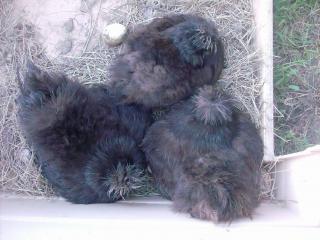Quote:
Thank you for the compliment
I learned one tiny piece at a time. In many ways, genetics is like math: each bit you learn is a building block for learning more.
I had very, very basic information from actual coursework. In high school biology, Mendel's pea experiments and genetics covered
maybe 2-3 or 4 pages. My ACT score placed me out of college biology (with 4 hrs credit), and in my college geology course I favoured physical geology over historical (fossils and ancient life) whenever the degree requirements allowed. Certainly I had acquired a basic concept of inheritance from ones parents, and a vague knowledge of the idea of recessive and dominant traits, but htat was about it.
Then I got chickens--discovering silkies in the process--and finally about a year later I acquired a pair of white silkies. A few months later I acquired a third, a self-blue splash. And I asked all the newby questions like what do you get if you pair a white with a splash, etc. (At that point I pretty much ignored the self-blue part of Stormy's genetic makeup).
Learned about the blue gene, tried reading more and got lost. Read other people's posts on various websites and gradually learned bit by bit; asked questions when I didn't understand. Found the
Poultry Genetics for the Non-Professional website and read and learned and read and learned and read and learned. Expanded my horizons and found
Belgian Barbu Bantams and
Poultry Genetics for Exhibition Breeders. All this time I was talking with breeders on various different forums, breeding my own birds and learning more and more, adding the knowledge and experience together and questioning when anything seemed contradictory.
Learn the concepts and the terminology; they apply regardles of species. Then learn specifics for the species, then the species' genes one by one. Henk's
Chicken Calculator is a GREAT place to play around and learn how the genes interact with each other, and his
basics page is a very good, up to date starting point.










